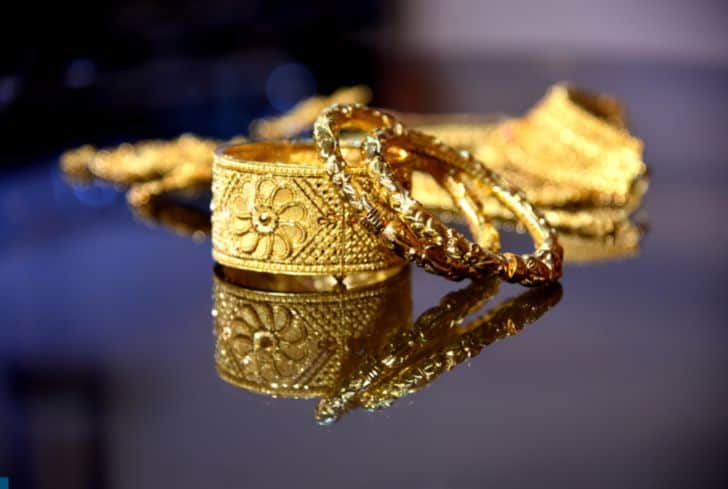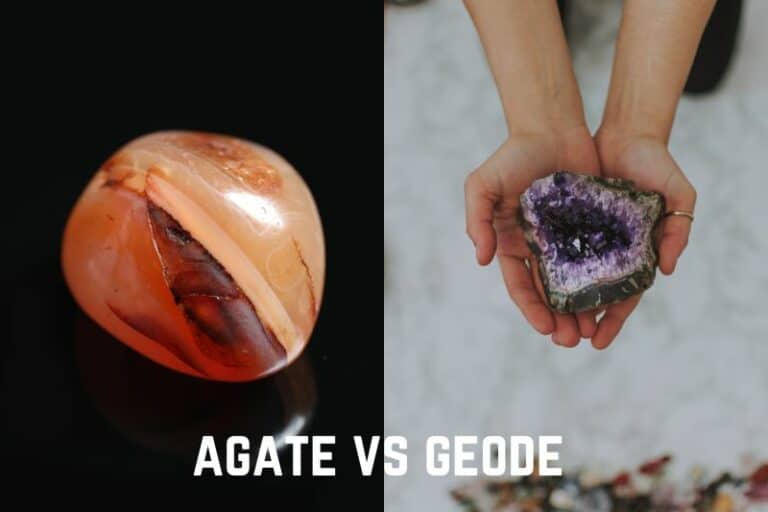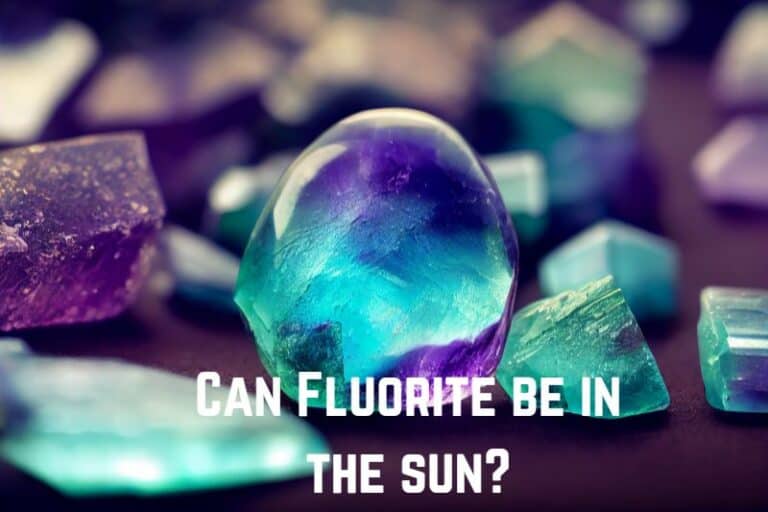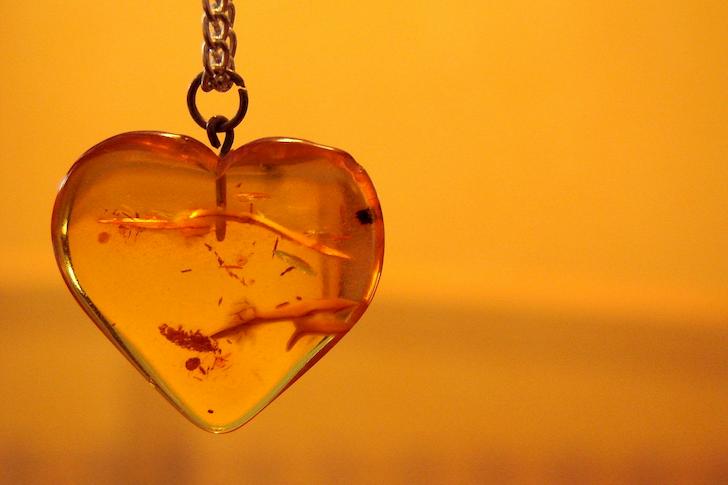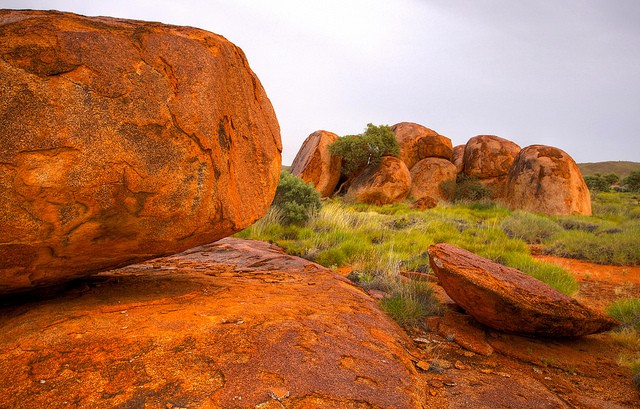Can Celestite go in the Water? (And in the Sun, Salt)
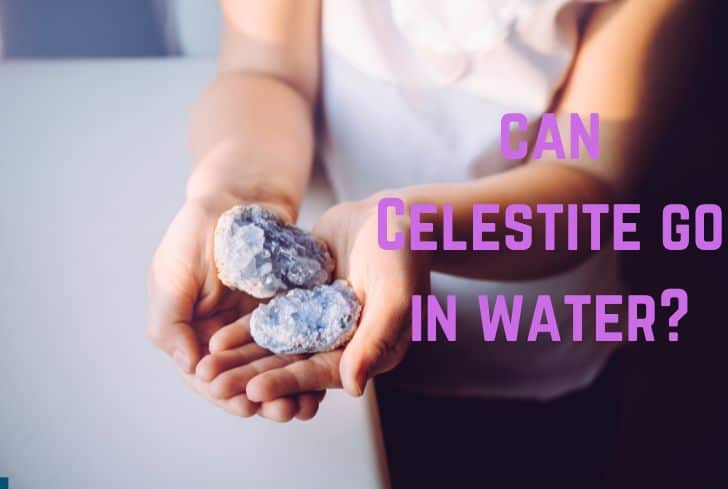
Celestite, also known as Celestine, is a mineral made up of strontium sulfate (SrSO4). Its name comes from the Latin term caelestis meaning “celestial”, a reference to the sky-blue colour of the mineral.
Have you ever wondered if Celestite can go in the water? In this article, we are going to discuss just that, while also looking at the mineral’s interaction with sunlight and salt. We will talk about the sources of its formation and its uses. Finally, we will learn how to take care of Celestite stones.
Can Celestite Get Wet?
No, Celestite should not get wet. It has a value of 3-3.5 on the Mohs Hardness Scale, which is below the minimum value required for minerals to survive underwater. Water can seep into the crevices of stones, widening their cracks and damaging them. It can also dull the color of the stones.
Mohs Hardness Scale is a relative measure of a mineral’s resistance to scratching. It also indicates the mineral relationship to water. A value of 5.0 and above on the Mohs Scale implies that the mineral can survive underwater.
Since the value of Celestite is 3-3.5, it is not safe to put it into water. Water seeps into the crevices of the stones, expands them, and thereby damages the structure of the stone. This also harms the way light is reflected from the stone, reducing its price value.
Water also dulls the color and tarnishes the color of stones. Keep reading to find out how to clean soft minerals like Celestite without damaging them.
Will Celestite Dissolve in Water?
No, Celestite will not easily dissolve in water, but it is still not safe to immerse it. Celestite is made up of strontium sulfate which does not dissolve in water easily. But even though water may not dissolve it, it will still do plenty of damage to the stone because Celestite is a soft mineral.
Celestite is composed of strontium sulfate (SrSO4), which is poorly soluble in water to the extent of 1 part in 8,800. It is more soluble in dilute hydrochloric acid and nitric acid, and appreciably soluble in alkali chloride solutions.
Crystals like selenite (having a value of 2.0 on the Mohs Scale) will dissolve completely in water. This will not be the case for Celestite , but it should still not be immersed as it is also a similarly soft mineral.
Water will damage its structure by entering its cracks and widening the gaps. It can also dull the beautiful sky-blue color which is the distinctive mark of Celestite, completely ruining its look and price value.
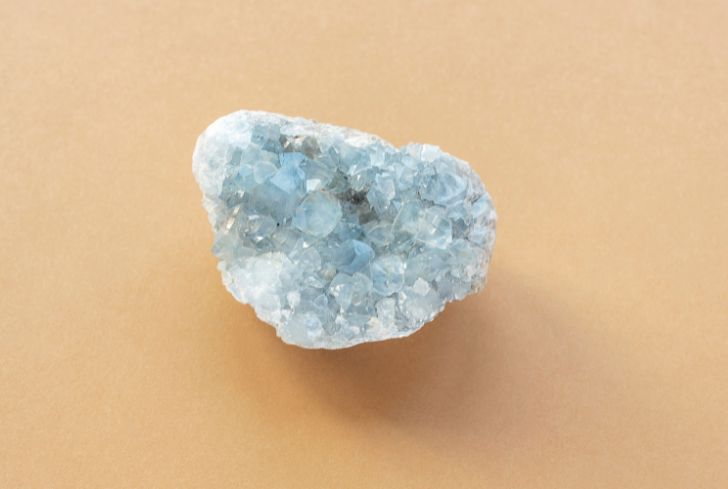
Can Celestite go in Salt?
Yes, Celestite can be placed on dry salt. However, you should never put Celestite in saltwater. Celestite is a soft mineral with a hardness of 3-3.5 on the Mohs Scale, meaning that it is not safe underwater. With saltwater, the damage done to the stone is even greater.
Water tends to enter the crevices of the stone and widen them, thus damaging the structure of the stone. It also dulls or fades the color of the stone. When you add salt here, things only get worse.
When dissolved in water, salt can enter the tiny cracks of the stone, and it remains there even after the water evaporates. These particles expand the crevices of the stone, thus damaging its structure.
Without the help of water, salt cannot enter the crevices. When salt touches the surface of the stone, it cannot harm it. So, you can place your Celestite stone on a bed of dry salt. Putting a stone in salt or rice is one of the most popular ways of recharging it.
Can Celestite go in the Sun?
No, Celestite should not be put in sunlight. It is a soft mineral with a value of 3-3.5 on the Mohs Hardness Scale. When exposed to sunlight for a long time, the distinctive sky-blue color of the stone will turn white. Besides dulling its color, sunlight will also damage the structure of the stone.
The UV rays of sunlight dull the color of Celestite. Celestite is a fragile stone, which when left in the sun, will go brittle and become more prone to breaking. Although recharging stones in sunlight is a popular method, it is not the best choice for Celestite.
Still, if you are keen on recharging your stone in the sun, try doing it in the early morning hours when the sunlight is gentle. You can also keep your stone behind a window, as the glass will work as a protective layer.
Finally, you can also try other methods of recharging the stone, such as leaving it in the moonlight, burying it in the mud, etc.
How to Cleanse and Take Care of Celestite?
Celestite is a soft mineral, and given its fragility, it’s important to know the right way of cleaning and taking care of the stone. Before we proceed, we need to make note of the following points:
- Avoid water: Celestite is a soft mineral having a value of 3-3.5 on the Mohs Hardness Scale. This means that it is not safe to put it in water. While Celestite will not dissolve completely it will still get damaged by water. The water will enter its tiny crevices and widen the cracks. Moreover, it will also dull the color of the stone.
- Avoid sunlight: Recharging stones under sunlight is a very common method, but it is not recommended for Celestite. The UV rays of the sun will turn the soothing sky-blue color of the stone into white, ruining its look and price value.
Given these constraints, here are three ways in which you can clean Celestite:
- Sage: For soft stones, sage is a great cleaning tool. You light the smudging stick and let its smoke surround the stone for about a minute. Check out this article on WikiHow for a detailed tutorial.
- Microfiber Cloth: Take a microfiber cloth and gently wipe the surface of the stone.
- Moonlight: While sunlight is too harsh, moonlight is perfect for cleansing your stone. Just place your stone on a windowsill and let it stay there for a night.
Besides cleaning, you must also take care of Celestite in everyday use. Since it is a fragile stone, it is better not to wear its jewellery during intense physical activities. When not wearing it, wrap it in a soft cloth and avoid placing it amongst other stones since they can scratch it.
Where to Find Celestite?
Celestite is found worldwide in small quantities and its pale blue variant is found mostly in Madagascar. White and orange variants have also been mined from Bristol, UK and Ontario, Canada. Celestite is found in sedimentary rocks, geodes, and in carbonate mineral sediments.
Celestite occurs both in crystal and fibrous forms. Sedimentary rocks are the most common source of Celestite, usually associated with minerals like halite, gypsum, and anhydrite. Interestingly, the skeletons of the protozoan Acantharea are also composed of Celestite.
In carbonate mineral sediments, burial dissolution causes Celestite precipitation. Celestite is also found in geodes, spherical rocks with hollow cavities lined with crystals. These are formed by the replacement of alabaster nodules having calcium sulfate gypsum or anhydrite.
Solutions having strontium that come into contact with calcium sulfate dissolve away the calcium, leaving cavities. In these cavities, the strontium precipitate as Celestite.
Near the village of Put-in-Bay, Ohio, exists the world’s largest known geode, which is a Celestite geode. It has been turned into a tourist spot, known as the Crystal Cave, and it has celestine crystals as wide as 18 inches, weighing over 300 pounds each.
What is Celestite Used For?
Celestite is one of the main sources of the element strontium, which is used in fireworks and metal alloys. Rubber, paint, and ceramics often use Celestite in their make-up, and so do certain types of glasses. Celestite is also used in small jewelry pieces and as raw, uncut crystal displays.
Strontium acquired from Celestite is mixed into a metal salt and used to manufacture red-colored fireworks. While Celestite itself is often blue, the fireworks made out of it burn red. For blue fireworks, copper is used, which is orange/red but burns blue.
Celestite is a fragile mineral that is difficult to cut and facet. This is why it is not used too often in large jewelry pieces; Celestite stones rarely exceed 10 carats. Instead, they are used in small jewelry pieces and as uncut crystal displays.
Like most crystals, Celestite is also valued by many for its spiritual associations. With its beautiful color of the morning sky, Celestite is seen to represent inner peace. It is said that the stone helps in activating the third eye and crown chakra, while also linking the two.
Conclusion
In this article, we have discussed Celestite’s interaction with water. With a hardness of 3-3.5 on the Mohs Scale, it is not safe to be immersed underwater. We looked at how sunlight can also be damaging to the stone. Finally, we discussed the right ways of cleaning and taking care of Celestite.

